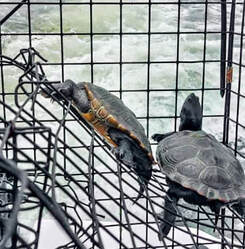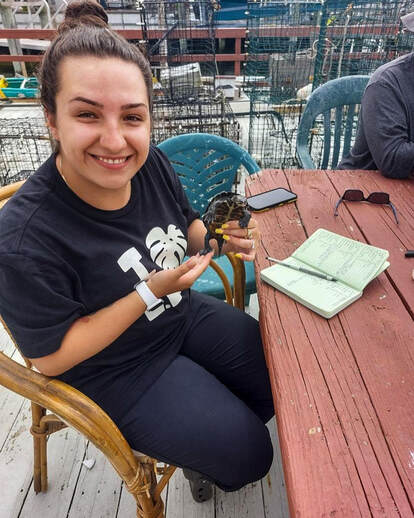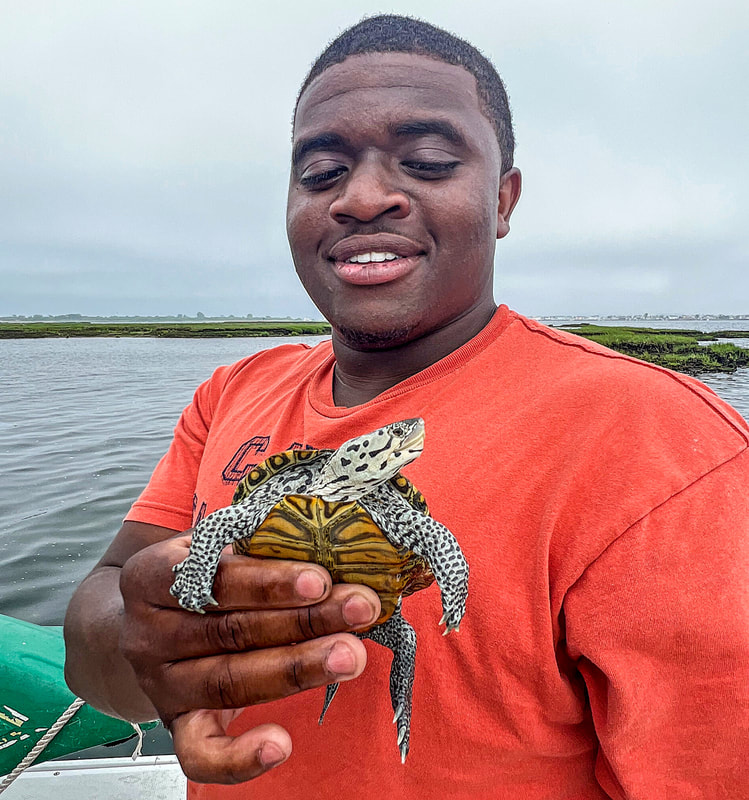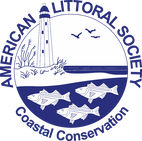 Diamondback terrapins are both a keystone species and top predators, making their conservation essential for the health of the ecosystems in which they reside. However, their numbers are dropping rapidly in New York's Jamaica Bay due to high levels of egg predation, drowning in crab and lobster traps, and habitat loss. The American Littoral Society is working with Hofstra University's Dr. Russell Burke on a study of the diamondback terrapin population in Jamaica Bay, called the Jamaica Bay Terrapin Research Project. Dr. Burke has been coordinating volunteer driven research on the Bay's West Pond since 1998. Alexandra Kanonik, director of the Littoral Society's Northeast Chapter, has collaborated on this research since 2008, and together they have published several scientific papers that contribute to the understanding of the diamondback terrapin population in New York City. Recently, the Littoral Society and R-Corps Interns took part in the first trapping session of the year, with the help of Don Riepe, the Society's Jamaica Bay Guardian. A total of 13 terrapins were carefully and temporarily captured in modified crab traps.  Turtles that had not been captured during previous surveys were checked for injuries, measured, and given unique identification tags. After all data was collected, each turtle was released near the place they were captured. The main objective of the research is to identify and compare the factors that affect the viability of the diamondback terrapin population at Jamaica Bay Wildlife Refuge, predominantly focusing on female terrapins that nest on the West Pond each summer. The study suggests a 35 percent decline has occurred in the adult female population since 1998. Plans are to expand the mark-recapture effort to females elsewhere in Jamaica Bay, as well as males and subadults. Terrapins are by far the most publicly viewed reptiles in most of Long Island, and are a significant component of the visitor experience at Jamaica Bay Wildlife Refuge. The Jamaica Bay Terrapin Research Project is a vehicle for community science and environmental education. Many project volunteers have never been to Jamaica Bay before, have never seen a wild animal up close, and have never held a turtle. Terrapin populations in and around New York City were decimated in the 1700-1800s when turtles were hunted and eaten in huge numbers. This intensified through the 1920s when terrapins of the New York/New Jersey area were heavily affected by the trade in terrapin meat, because of proximity of terrapin habitats to major food markets in New York City and Philadelphia, as well as terrapins’ reputation as high-quality meat. After the collapse of the soup industry (1920-1930), terrapin populations started recovering in some areas, until large-scale coastal urban development caused massive habitat losses in the 20th century. Subsequent development of New York City led to the loss of most regional Spartina marshes, and like all the others, Jamaica Bay’s Spartina marshes have been hard hit. Saltmarshes are low lying, intertidal grasslands that are alternately inundated and drained by tides. These areas also function as a fish and shellfish nursery and feeding ground for an abundance of wildlife. In addition to acting as natural filters, which improves water quality in the bay, they support a variety of invertebrates such as mussels and crabs that are key elements of the estuarine ecosystem. Terrapins are tightly linked to Spartina; where there is no Spartina, there are no terrapins. This is because some of the creatures that live in the marsh, such as periwinkles (Littorina sp.), eat cordgrass and healthy terrapin populations help keep periwinkle populations in check. The importance of this circle of life goes even deeper. Cordgrass plays a key role in holding a salt marsh together, preserving its ability to remove carbon from the atmosphere and protect surrounding areas from flooding or storm damage. In addition, terrapins move enormous quantities of nutrients and calories from the ocean to land in the form of eggs. In addition to providing food for a variety of predators, terrapin eggs and hatchlings also feed plant roots, which contributes to maintaining the salt marsh environment. Over the past 150 years, Jamaica Bay has lost hundreds of acres of salt marsh islands due to factors including development, dredging, pollution, rising sea levels and erosion. If the marsh loss is not stopped, it would compromise the city's best natural defense against coastal storms. The Littoral Society and partners have been working to save and restore Jamaica Bay's wetlands for the last decade, through coordinated community marsh grass planting events on two of Jamaica Bay's marsh island restoration areas (Ruler's Bar and Blackwall Marsh islands). During that time, the Society's Northeast Chapter has brought together volunteers to plant more than 500,000 culms of marsh grass. Those efforts were made possible through support from partners and funding from the city, New York state, and the federal government. Thanks to the efforts of U.S. Senators Charles Schumer and Kirsten Gillibrand, as well as participating federal agencies, funding was recently secured to help expand that work. The passage of two major bipartisan pieces of legislation will provide nearly $20 million toward design and construction of the Stony Creek Marsh Restoration project. Stony Creek Marsh is an important marsh island in Jamaica Bay that has been degraded and fragmented over time. Once completed, this project will restore over 50 acres of marsh in the bay, creating important habitat and helping clean waterways, while also providing protection from extreme weather events for southern Brooklyn and Queens. The Jamaica Bay Terrapin Research Project is supported by a grant from the Jamaica Bay Rockaway Parks Conservancy.
Bill Keenan
7/18/2022 05:47:39 pm
...recently retired...am looking to make a connection to volunteer with the Littoral Society or the Jamaica Bay Rockaway Parks Conservancy. Have volunteeered with the National Parks in Breezy Point and am now volunteering with the Prospect Park Alliance providing garden and restoration services. 7/20/2022 03:01:09 pm
Thanks for contacting the Littoral Society. We have a number of initiatives involving Jamaica Bay. The best contact for finding out about volunteer opportunities is our Northeast Chapter Director Alexandra Kanonik. You can reach her by emailing: [email protected] Comments are closed.
|
Archives
July 2024
Categories
All
|


